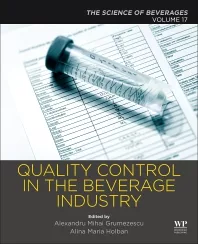Collaboration efforts vital to beverage facility operations
Every beverage operating facility experiences the full scope of the infamous supply chain process
Every beverage operating facility experiences the full scope of the infamous supply chain process. The process can be relatively simple or unnecessarily complex depending on which impacting factors have grown to become domineering and self-inflicting situation creators.
Avoiding or eliminating situations that tend to create these complexities is very important — it means the beginning and ending of the supply chain must be in sync for the company to efficiently and cost- effectively carry out strategic short- or long-range plans or programs. Some in-depth searching has revealed that even in our high-tech, partially sophisticated beverage environment such synchronizing is viewed as “taken for granted” or “everybody goes through these steps.” However, that is not completely accurate and therein lies the prompting and necessity of ensuring a bona fide marketing and manufacturing alliance exists.
From an operating perspective and/or an engineering application viewpoint, it is good operating practice to have a strong, compatible and mission (project) focused alliance composed of creators (marketing) and doers (manufacturing). However, in today’s market, such alliances are not always recognizable, might not be deemed necessary or might not exist at all. Some honest comments can and should reflect some age-old mindsets present on both sides of the aisle that justify the need for such a described alliance.
The creators
When it comes to the creators, consider this basic mindset: Maximize sales volumes of highly desired products, promote specific brands predicated on area demographics, match or surpass the competition, establish retail/wholesale relationships, provide customer satisfaction, formulate community goodwill and ensure all activities are profitable for the company in whatever sequence is realistic.
The mindset has a perceived premise: manufacturing can provide anything needed. To accomplish these and additional marketing activities, the “creators” become effective innovators of products, packages and promotional events to fulfill their assigned responsibilities.
Marketing people continually are making forecasts, assessing area demographics and evaluating competitive activity. These activities become the bases for generating new products, packages and promotional events or altering the present to enhance the marketing position.
As plans are developed for these changes to existing or new products/packages, significant questions arise that actually begin the supply chain creation. For example, with new products, the following questions should be asked:
- Who and where is the source;
- Do they have the capacity;
- When will it use new or old processes;
- Is new or old equipment required;
- What skilled people are necessary; and
- What are the costs involved?
At this point, the need for an alliance should become necessary because these questions require answers from the “doers,” who have the engineering and production experience and knowledge to compile a comprehensive proposal. This position is taken because firm and productive alliances do not exist in many operations, causing projects to become unjustified, high-risk ventures with undesirable results.
The doers
Whether manufacturing is in-house or contracted, the doers must possess the infrastructure required to process and package the changing magnitude of SKUs throughout the beverage industry. On this side of the aisle, it is necessary to have prepared a comprehensive infrastructure capability (CIC) document. The CIC should contain the answers to the questions raised by the creators of the project and be periodically updated as operating conditions change.
- Does manufacturing have the capability of processing products in the project;
- If not, will additional or modified equipment be required and is it available;
- Are agency compliances a factor to be considered;
- What different personnel skills may be required for the process phase; and
- Does the plant possess resources for the processing?
- In addition to the processing, the doers must determine what the packaging phase will require:
- Does current machinery and equipment have the capacity to produce required volume;
- Can modifications be made or will new equipment be purchased;
- If package make up requires specialty machinery — is it available — can it meet schedules;
- Is packaging in sync with the materials application;
- Does equipment require special operators;
- To what extent will the packaging be automated and/or interfaced with a warehousing system; and
- What are the cost justification payback criteria management must use to decide?
It should be recognized that the processing and packaging portions of the supply chain are vital to quality and economical products finding their way to the consumer.
For this reason, emphasis is placed on having a better understanding between the creators and doers and their roles in the overall cycle. That is why this alliance type relationship is beneficial to the entire company. Time and experience have proven, knowledge, experience and good judgment have been winners for many years — look at the winners as evidence. BI
Looking for a reprint of this article?
From high-res PDFs to custom plaques, order your copy today!





